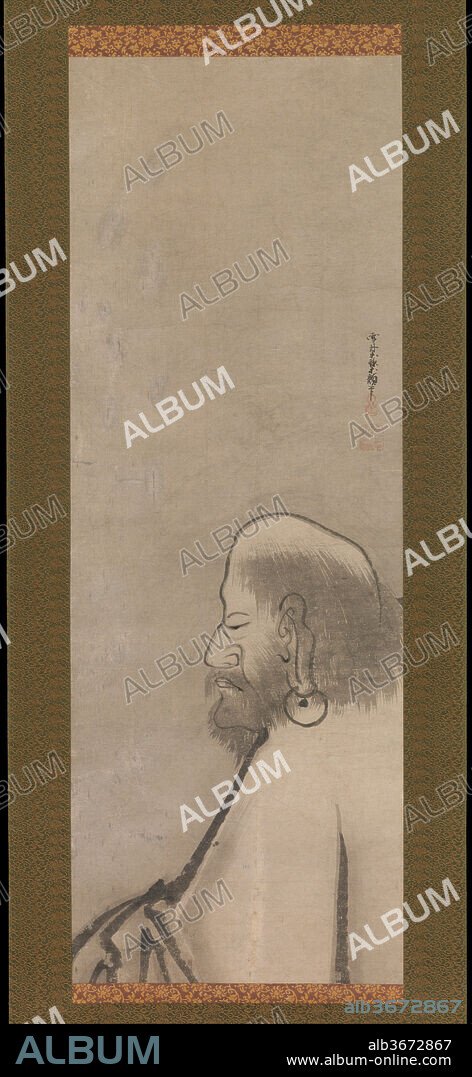alb3672867
UNKOKU TOGAN. Portrait of Daruma

|
Add to another lightbox |
|
Add to another lightbox |



Buy this image.
Select the use:

Author:
Title:
Portrait of Daruma
Caption:
Portrait of Daruma. Artist: Unkoku Togan (Japanese, 1547-1618). Culture: Japan. Dimensions: Image: 39 1/2 x 14 1/8 in. (100.3 x 35.9 cm). Date: early 17th century.
Daruma (the Japanese abbreviated pronunciation of the Sanskrit Bodhidharma) was among the most common subjects for Zen monk-painters. Born in India in the 6th century A.D., Daruma is recognized as the first patriarch of Chan (Japanese: Zen) Buddhism in China.
Unkoku Togan's portrait of Daruma is presented in full profile--a somewhat uncommon rendering, though precedents exist in surviving works attributed to Sesshu and his celebrated Chinese predecessor Muqi (active until 1279). Usually the Buddhist saint is presented in three-quarters profile, or in a full-frontal view. Since Daruma came from India, he is inevitably rendered as South Asian, hirsute, and with a bulging nose. Here the outline of his cranium, from the back of the neck to the curve of the nostril, is skillfully rendered in a single modulated stroke--a trademark of many later ink renditions of the monk by other artists. The facial expression is captured with the utmost economy of brush strokes. The elongated earlobes and earring serve as a signal of a connection to the historic Buddha, who was born into a royal family, and thus wore jewelry. The outlines of the robes are rendered in boldly brushed, almost calligraphic lines. The figure of the master is left mostly in reserve except for the grey lines of his shaggy hair and beard, silhouetted against the surrounding in gray wash that creates an amorphous blank space--not darkness, not bright sky--just nothing.
Togan was an artist trained in the Kano atelier who positioned himself as an heir to the legacy of Chinese ink painting in the style of Toyo Sesshu (1420-1506). Born into a wealthy samurai family in Nagasaki, Togan eventually moved to Yamaguchi to serve as an official painter for the daimyo Mori Terumoto. While based in Yamaguchi, Togan was allowed live in the temple building Unkoku'an, "Hermitage in the Valley of Clouds," once occupied by Sesshu. By taking Buddhist vows himself and immersing himself in the study of Sesshu, Togan created numerous Zen-inspired works.
Technique/material:
Hanging scroll; ink on paper
Period:
Momoyama (1573-1615)
Museum:
Metropolitan Museum of Art, New York, USA
Credit:
Album / Metropolitan Museum of Art, NY
Releases:
Model: No - Property: No
Rights questions?
Rights questions?
Image size:
2147 x 4656 px | 28.6 MB
Print size:
18.2 x 39.4 cm | 7.2 x 15.5 in (300 dpi)
Keywords:
 Pinterest
Pinterest Twitter
Twitter Facebook
Facebook Copy link
Copy link Email
Email
